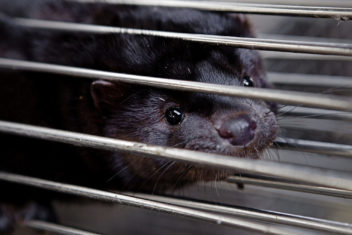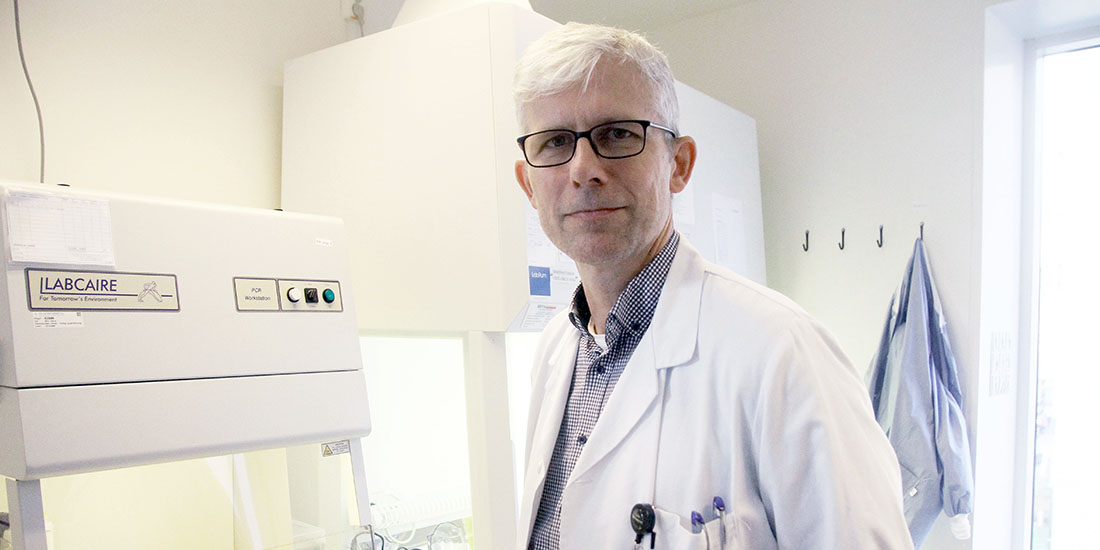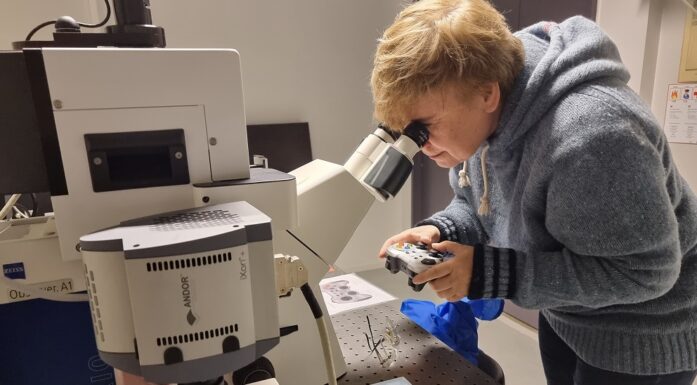Virus might have mutated before it appeared in mink
It’s understandable that the Danes want to be on the safe side and exterminate the mink to stop this variant of the coronavirus, says Andreas Christensen, an associate professor at NTNU.
The Danes took drastic action to cull more than 17 million mink in early November because they’re worried a vaccine could be less effective against the mutated variants of SARS-Cov-2 that have appeared among mink and humans in North Jutland.
Infections from mink have been detected in 214 people, both on mink farms and in the local population. The Danes are particularly afraid of a variant that has infected 12 people and that has proven to be more resistant to antibodies in laboratory experiments.
What’s worrisome is that the “spikes” that protrude from the surface of this virus are different from coronavirus otherwise. The “spikes” – a spike protein – act as a key to unlock access to our cells. Most of the vaccines under development are designed to attack precisely this spike protein.
“The horror scenario is that these changes to the spike protein might make a vaccine less effective,” says Andreas Christensen, virologist and chief physician at St. Olavs Hospital, and an associate professor at NTNU’s Department of Clinical and Molecular Medicine.

Statens Serum Institut in Denmark states on its website that the backdrop for the mink cull is that continued mink breeding would pose a major risk to public health. Illustration photo: Colourbox
Infection between species increases risk
Mutations are small changes in an organism’s genetic material. The risk of mutations increases significantly when the virus spreads from one species to another, for example from humans to mink or vice-versa.
In this way, the virus adapts to the new species.
The risk of new mutations also increases when the virus is transmitted between many individuals, for example on a mink farm or at an animal market. In Denmark, five different groups of mutations have been found in mink.
Doubts about mink mutation
However, Christensen believes it is unclear whether the dreaded cluster 5 virus variant in North Jutland is due to mutations that have occurred in mink and that have then been transmitted back to humans.
“None of the mutations that have been mentioned so far in Denmark are new. We’ve seen them in people with COVID-19 before. The unique thing about North Jutland is that we’re seeing this combination of variants in the same virus strain for the first time,” says Christensen.
“Over time, a virus population that spreads among mink also has the potential to mutate in other directions than viruses that spread among humans.”
“We have to be open to the possibility that the virus may have mutated before it was transmitted to mink, and so it’s not certain that these mutations represent something completely new and dangerous. They’re mutations people have encountered before,” he says.
“On the other hand, any mutation affecting the binding sites of antibodies must be closely monitored, especially in thinking about possible consequences for the effectiveness of vaccines. Over time, a virus population that spreads among mink has the potential to change in other directions than viruses that spread among humans,” he said.
Mink are susceptible
Six countries have reported coronavirus infections in mink. Christensen says it’s hard to know how at risk Norwegian mink may be.
“Some animals are obviously susceptible to becoming infected, like we’ve seen in mink and hamsters. The danger increases when a lot of animals live close together. Viruses mutate all the time, so coronavirus variants in Norway are a little different than in Denmark and may not be transmitted as easily,” he said.
“Norway has also had the advantage of low infection incidence in the population. But the risk is still there, of course,” says Christensen.
He concurs that the Danes clearly are very worried since they’ve wiped out the entire mink population.
“We don’t yet know whether this particular combination of mutations associated with mink will weaken the effectiveness of a vaccine or be more resistant to antibodies. There’s no guarantee that the experiments done with antibodies in the lab describe the conditions in real life. From a public health point of view, it’s good that the Danes are choosing to err on the safe side,” says Christensen.
Public health risk
Statens Serum Institut (SSI) in Denmark says on its website that the backdrop for the mink cull is that continued mink breeding would pose a major risk to public health.
The institute feared that more people would become infected, and that the risk of new mutations would make vaccines less effective.
“The Norwegian Food Safety Authority reminds people that not letting animals lick your face is a good habit, as is washing your hands after handling animals.”
At the same time, Statens Serum Institut emphasizes that nothing suggests that this virus variant is more dangerous or more contagious than the variants we already know about.
Norwegian Food Safety Authority: other animals not dangerous
According to the Norwegian Food Safety Authority, pets and domestic animals in Norway are not suspected of being a source of infection for COVID-19.
Their website says, “There are few known cases where people who do not work with mink have been directly infected by their own or other people’s animals.”
Nevertheless, the Norwegian Food Safety Authority reminds people that not letting animals lick your face is a good habit, as is washing your hands after handling animals.
According to Norges Pelsdyralslag (Norwegian Fur Breeders Association), Norway has 170 fur farms. The Norwegian parliament has decided that the fur industry will be dismantled by 2025. NOAH, an animal rights organization, has fought to have the Norwegian fur industry brought to an end during 2020.





